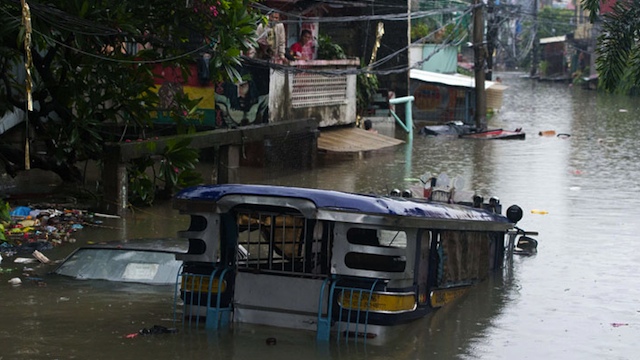SUMMARY
This is AI generated summarization, which may have errors. For context, always refer to the full article.

MANILA, Philippines – The Asian Development Bank (ADB) warned the Philippines of a looming water crisis and urged the country to boost supply and sanitation.
The Manila-based lender’s Asia Water Development Outlook report showed the Philippines and 48 other countries are in varying stages of “water insecurity.” In Asia-Pacific, 3 out of 4 countries have serious water supply problem, the report added.
The Philippines performed poorly in the National Water Security Index. Together with Vietnam, it received the lowest score of one in urban water security among ASEAN countries. The two countries also tied at second to the bottom in water security.
The index ranked the countries based on 5 factors—household, economic, urban and environment water security, and resilience to water disasters.
“The Philippines comes out at level two out of 5 so that means there’s still quite some way to go. The scores in the 5 key dimensions are two for household water security, 4 for economic water security, doing strongly there, one for urban water security, which means treatment of wastewater and management and reduction of floods and the damages from floods. That is an area of serious concern to increase water security for action, as mentioned, and of course the Philippines is engaged in that. Environment water security score is 2 and the resilience to water disasters is also 2,” ADB’sWouter Lincklaen Arriens said in a press conference on Wednesday, March 13.
“That resilience incorporates some indicator for exposure and as we know, those of us who live here, the Philippines is very exposed to water-related disasters. We have many typhoons every year and the forecast and predictions are that such intense weather events will not decrease but increase. That’s why this is indeed an area for action,” he explained.
Investments needed
ADB Vice President Bindu Lohani said the region needs to invest an additional $59 billion to improve water supply and another $71 billion for better sanitation in 2014. He said these investments would go a long way in meeting the Millennium Development Goals on access to water and improved water sanitation by 2015 and beyond.
In terms of access to water, Lohani said between 1990 and 2010, the Asia Pacific region was able to provide 1.7 million people access to safe and secure water facilities. But with the rapid increase in population, some 65% of people in Asia-Pacific still do not have access to safe and secure water supply.
Lohani said that sanitation, on the other hand, is a “great concern” across the region. He said this MDG target will not be achieved “no matter what we do annually,” given that over 1.7 billion people do not have access to improved sanitation.
“ADB takes water security seriously. We have Strategy 2020 and water is one of our major focus areas. Out of our lending, we do about $2 billion a year in this area but we do know we need to do more, especially in the sanitation area. Maybe some good ideas, new ideas we hear will help us take this agenda further,” Lohani said.
The ADB report provides the first quantitative and comprehensive analysis of water security on a country-by-country basis in the region. It examines all dimensions of water security from the household level to water-related disasters, and uses indicators and a scaling system to rank the progress of each of the 49 countries under assessment.
View the full report below.
– Rappler.com
Add a comment
How does this make you feel?
There are no comments yet. Add your comment to start the conversation.